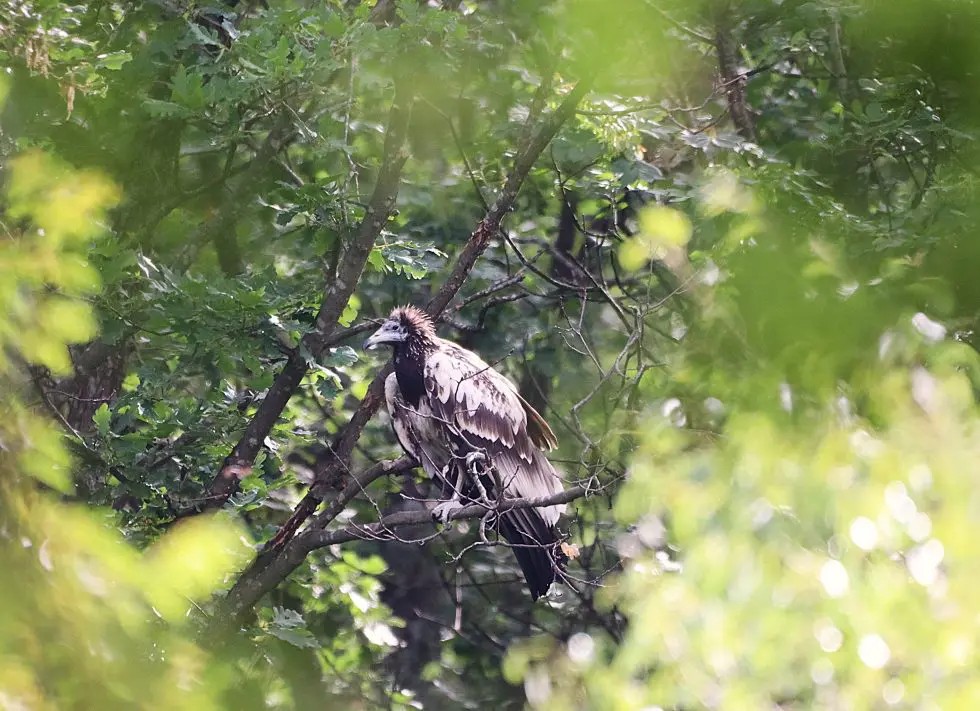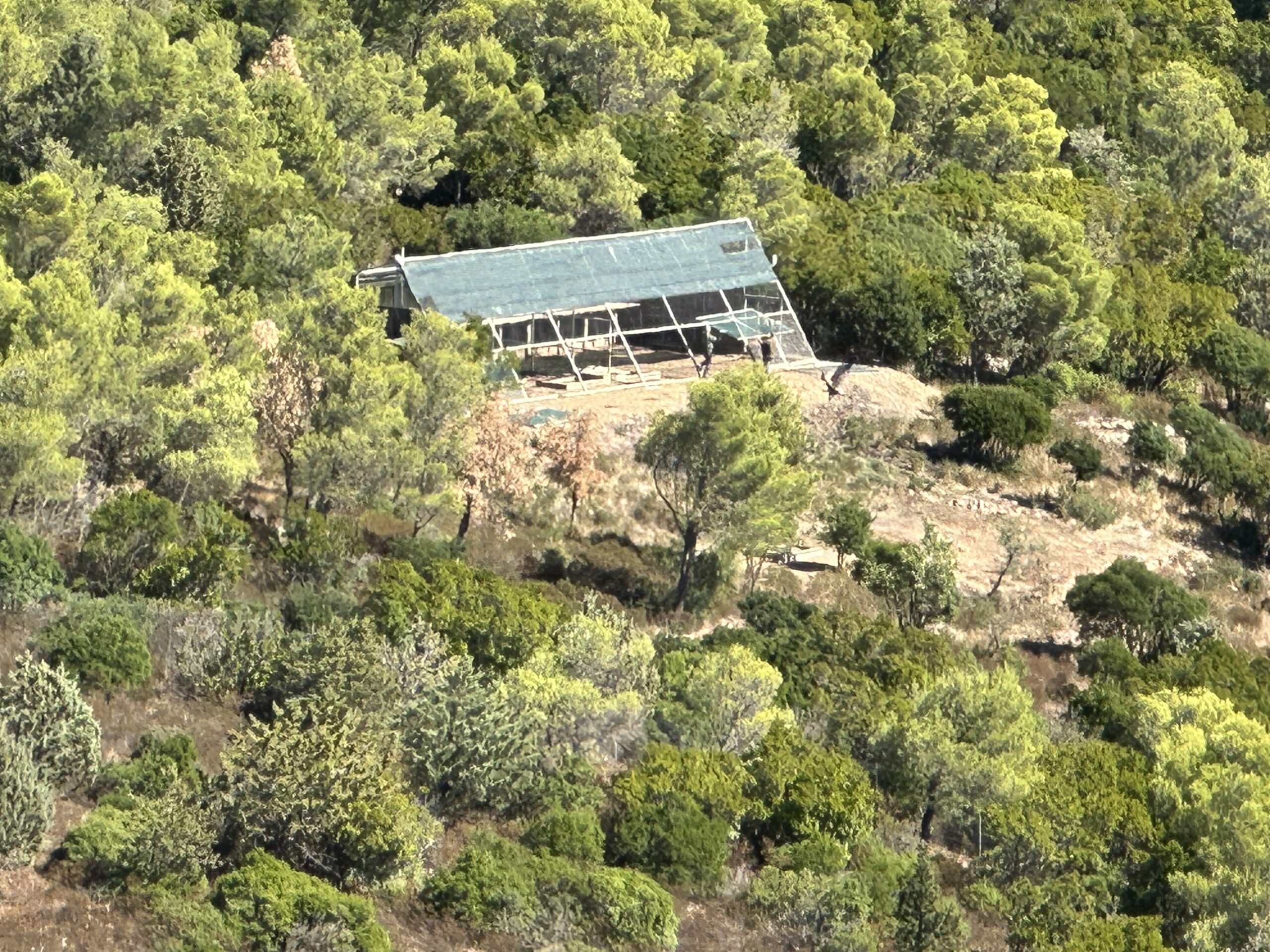Italy’s rarest raptor nests on Capo Caccia (Sardinia) cliffs for the 7th year consecutively. An Egyptian Vulture pair spontaneously colonized Sardinia for the first time, breeding in Porto Conte Regional Park since 2019. An extremely rare event that rewards years of vultures conservation actions on the island.
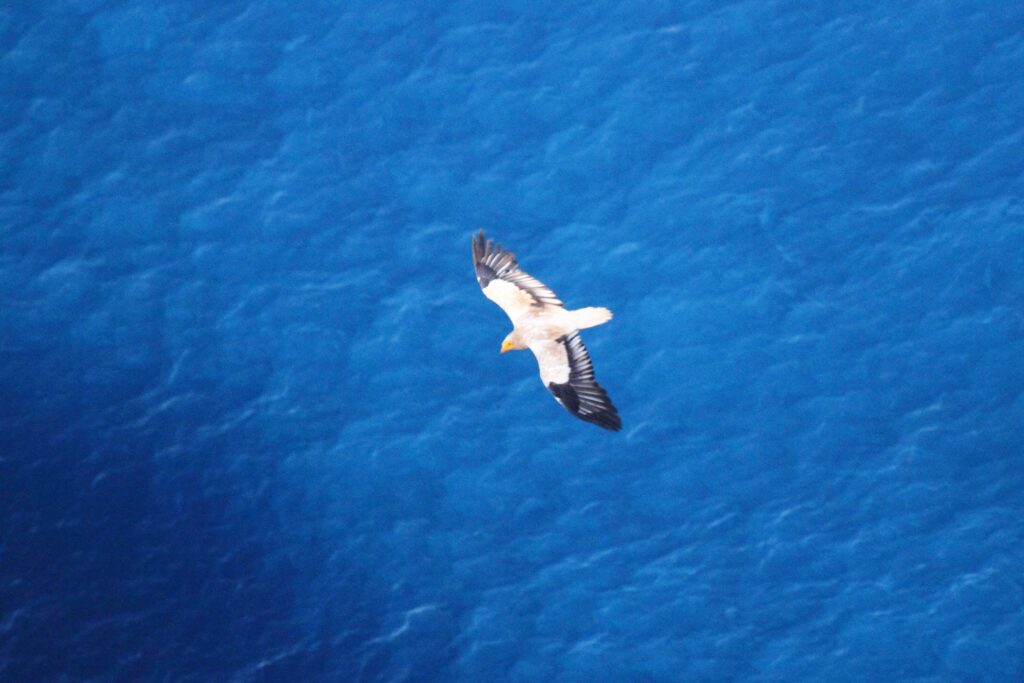
When a Egyptian Vultures (Neophron percnopterus) pair chose Capo Caccia cliffs – in Porto Conte Regional Park (Sardinia) as their nesting site for the first time in 2019, they immediately made headlines. After all, there was no documented evidence of an Egyptian Vultures pair breeding in Sardinia before. Seven years later, the same pair continues to amaze vulture conservationists with their choice. Their affiliation rewards years of efforts to make the island a place where vultures can thrive. In addition, this year nesting attempt comes right after the LIFE Safe for Vultures project technical meeting for the reintroduction of Cinereous and Bearded Vultures in Sardinia.
The Sardinian popular pair
Historically, Egyptian Vultures have been only occasional visitors in Sardinia. But in 2019, a solitary pair changed everything. They started a new chapter for vultures conservation on the island, successfully rearing a chick in 2019, 2020, 2023 and 2024. The exceptionality of these events induced a team of researchers to analyse and describe them in details in a poster presented at the European Vulture Conference in 2023. This year they started nesting once again, to the spot that everyone now considers theirs.
The pair has been constantly monitored, and this year, once again, they have been seen mating. The video, recorded from a safe distance, has been reposted by the local news. Further monitoring activities saw the pair continuously attending the nest. We will have to wait a few more weeks to confirmed if the breeding season will be successful this year too.
What makes Sardinia a sweet spot
La LIFE Safe for Vultures project conducted a study in 2024 to comprehend which factors influenced the nesting preference of Egyptian Vultures in Sardinia. The study, published in “Ethology, Ecology and Evolution”, highlighted a mix of natural factors and conservation actions as the recipe for success.
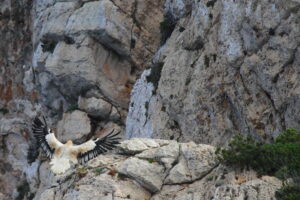
The cliffs of Capo Caccia, in Porto Conte Regional Park, are a quiet spot, with little human disturbance and few natural predators. They are also characterized by favourable climatic conditions, including strong winds, offering ideal flight conditions.
In addition, the presence of a nearby supplementary feeding station encouraged the pair to settle down. The local Griffon Vultures colony, restocked by the LIFE Under the Griffon Wings project is also growing, demonstrating the effectiveness of the conservation measures. All conservation actions, taken by the LIFE Under the Griffon Wings and the LIFE Safe for Vultures projects, to protect the Griffon Vultures have indeed contributed to make the area safe for Egyptian Vultures too.
Italy’s rarest raptor
La Egyptian Vulture is the smallest vulture species in Europe, and the only one that completes long-distances migrations. The species is globally endangered (IUCN Red List of threatened species), but in Italy it counts only a handful of breeding pairs, making it the most threatened bird species on a national scale. The population dramatically declined from the 1950s, mirroring and unfortunate European trend.
Restocking initiatives have been put in place, in order to save the species from extinction. The Centro Rapaci Minacciati (CERM) plays a crucial role by maintaining a captive breeding programme and releasing individuals in the wild since 2003. The LIFE Egyptian Vulture project (2017 – 2022) also played a vital role in the conservation of the species, participating in the restocking initiatives, monitoring individuals, and mitigating threats.
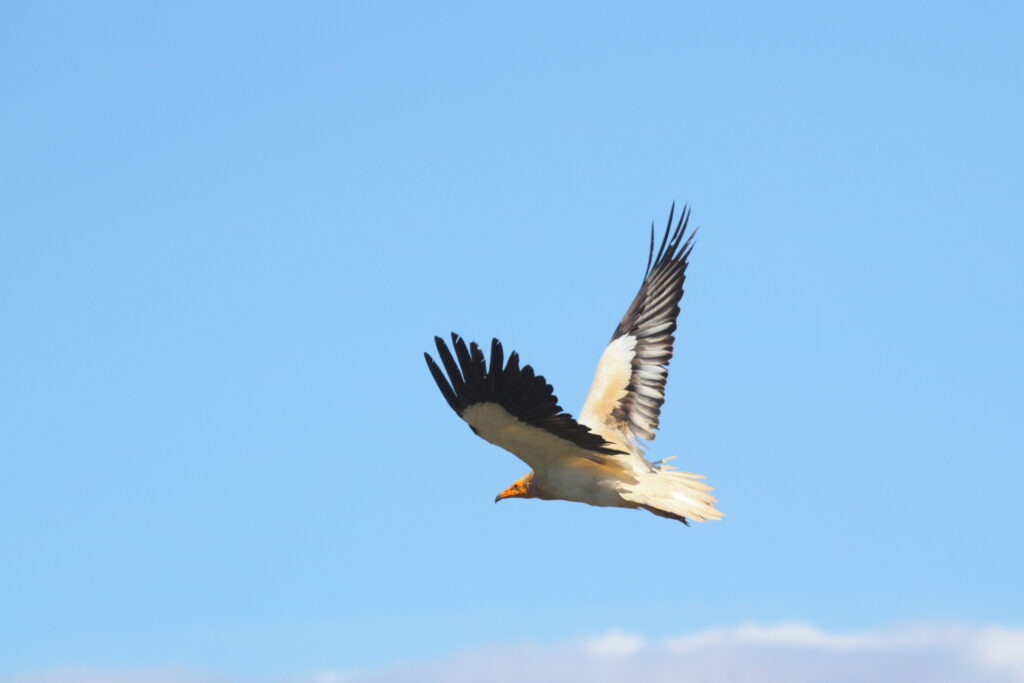
The cascade effects of conservation
The recurrent successful breeding of Egyptian Vultures in Sardinia is not a lucky coincidence. It is closely tied to the ongoing efforts to protect Griffon Vultures population on the island. With Egyptian Vultures still critically endangered in Italy, every successful breeding can make the difference.
This particular pair, nesting every year in the same spot, is proving us that conservation actions have resonance way beyond the species we are fighting to protect. They give us a little hope for the species and encourage us to keep working to mitigate the threats that brought it close to extinction.
The LIFE Safe for Vultures project
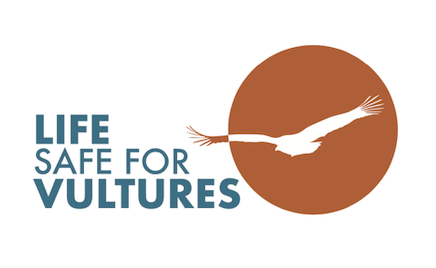
LIFE Safe for Vultures is co-financed by the EU’s LIFE Programme to restore the vulture guild in Sardinia. The University of Sassari leads the project in collaboration with Agenzia Regionale Forestas, Sardegna Corpo Forestale, E-Distribuzione and the Vulture Conservation Foundation. LIFE Safe for Vultures builds on the work of the successful LIFE Under Griffon Wings, with the ultimate objective for Griffon Vultures to regain their historic ranges and distribution areas from the central-eastern part of Sardinia to the south and promote the long-term survival of the species on the island. An additional feeding station will be established south of the island, and 40 additional Griffon Vultures will be translocated and released.


